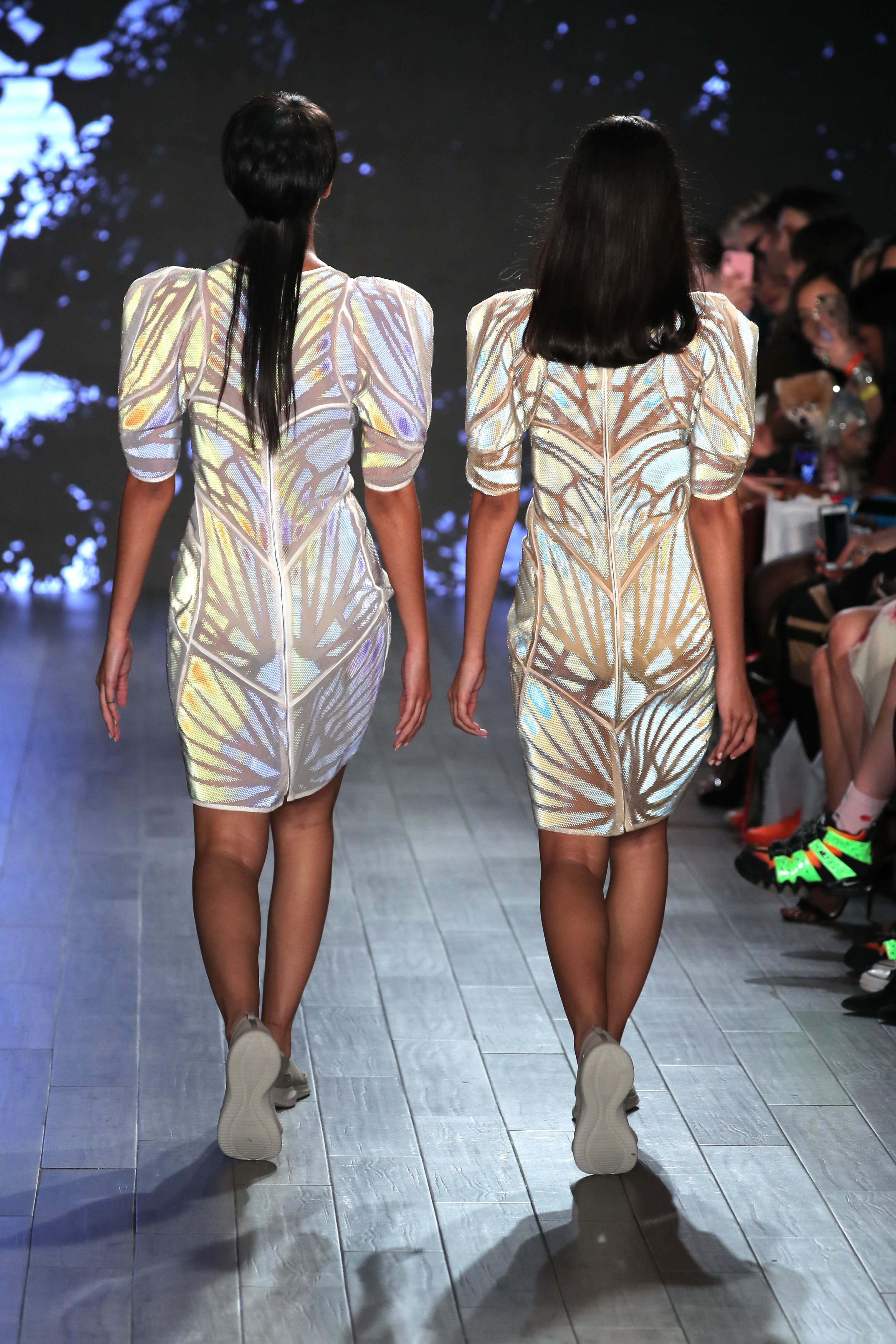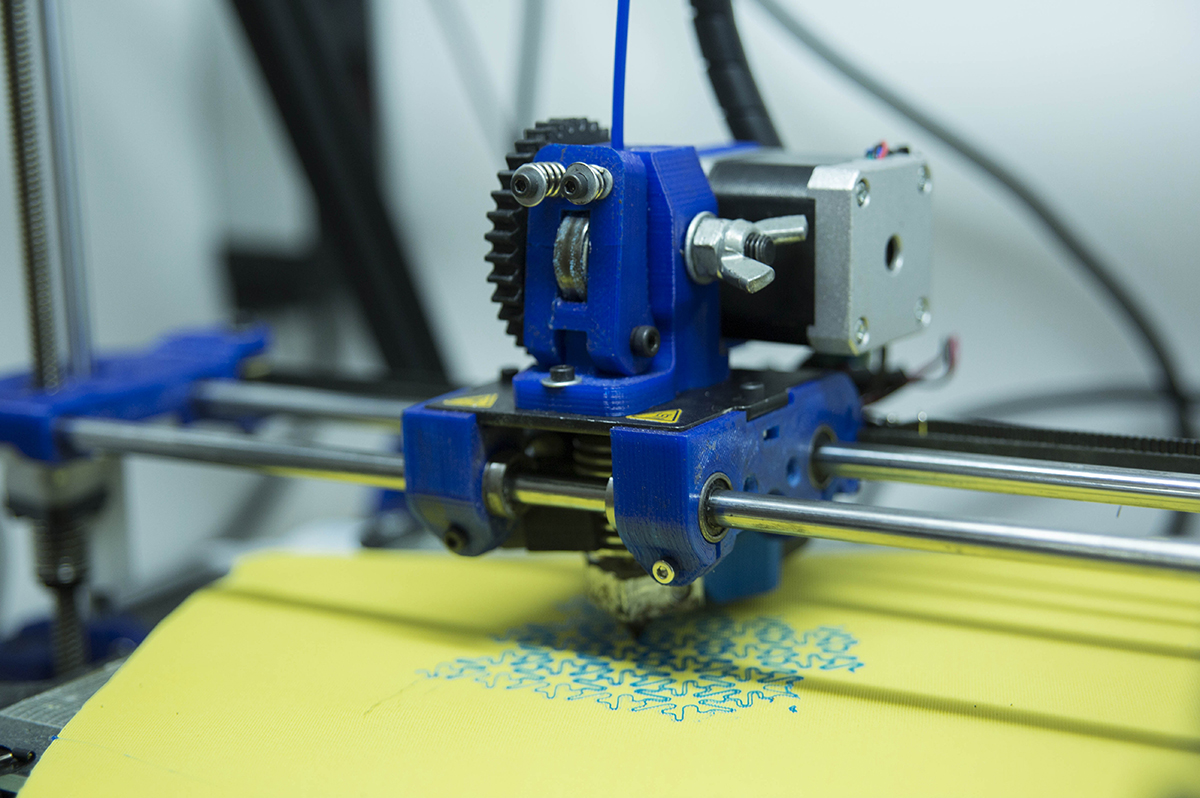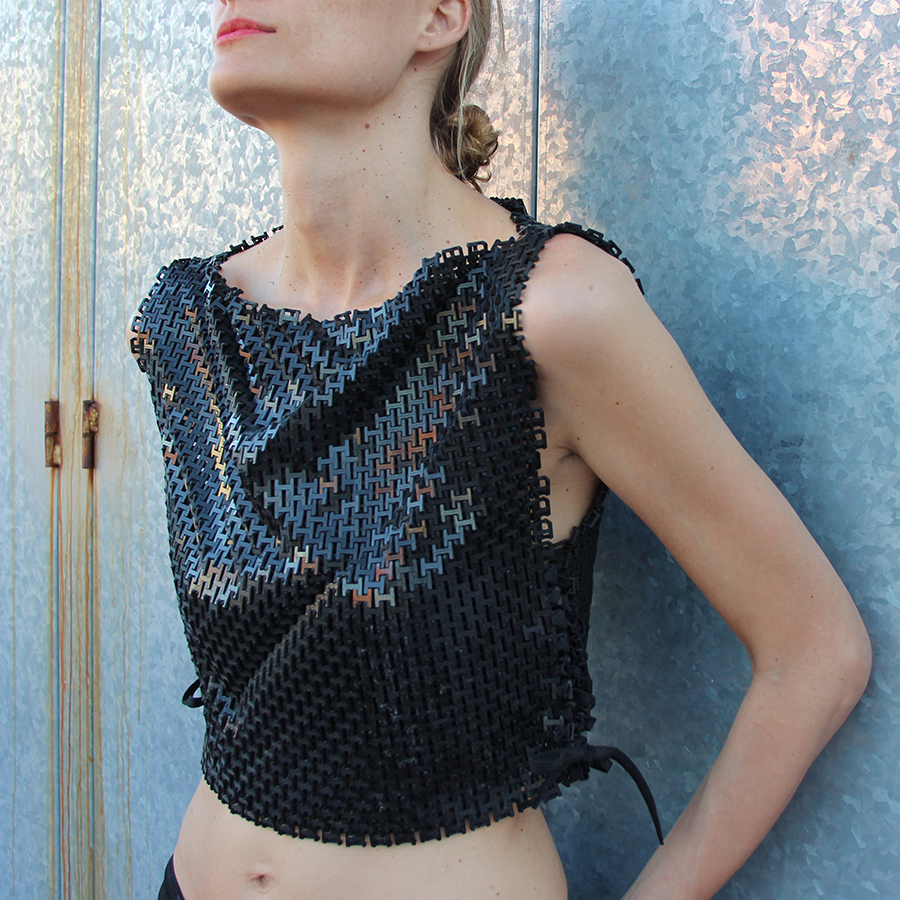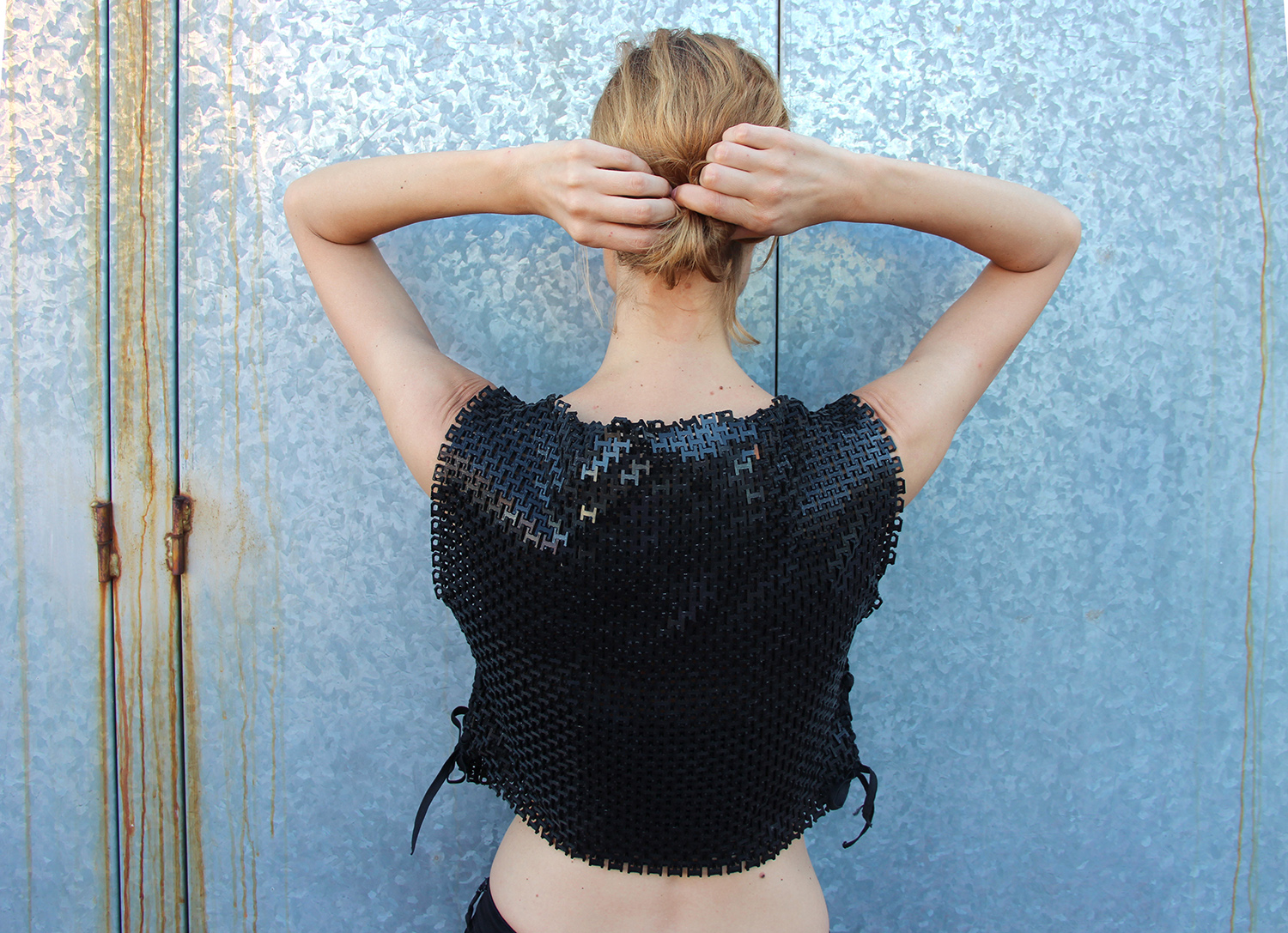
NEW YORK, NEW YORK A model walks the runway during threeASFOUR Runway Show hosted by Klarna STYLE360 NYFW on September 11, 2019 in New York City. (Photo by Thomas Concordia/Getty Images for Style360)
As is the case with many other industries, from aerospace and medical to automotive and military, 3D printing has been infiltrating the world of fashion…and what better venue to highlight the combination of technology and textiles than New York Fashion Week? Held in September and February, the semi-annual New York Fashion Week (NYFW) series of events is one of the world’s four major fashion weeks.
Years ago, New York City design firm threeASFOUR founded an avant garde fashion label that frequently uses 3D printing in its garments, which we’ve seen at previous NYFW events. For the September 2019 series, the company teamed up again with frequent collaborator Stratasys for a truly innovative runway look: the first high fashion garment with elements that were 3D printed directly onto the fabric itself. The Chro-Morpho collection, introduced at the firm’s fall/winter runway show, shows that 3D printing on clothing has commercial potential.
“This has significant implications from a business perspective,” Craig Librett, the Senior Public Relations & Public Affairs Manager for Stratasys, told us. “Instead of creating elements separately – and manually affixing them later – this new technique enables fashion houses and brands to develop hundreds of exclusive pieces with 3D printed elements that can be sold and worn on the mass market.”
 With a few exceptions, most 3D printed fashion consists of elements that are 3D printed separately, and later affixed to the garment itself. But Stratasys believes that 3D printing directly onto textiles could really help open up the technology’s “commercial viability” in terms of functional, flexible, and modern apparel.
With a few exceptions, most 3D printed fashion consists of elements that are 3D printed separately, and later affixed to the garment itself. But Stratasys believes that 3D printing directly onto textiles could really help open up the technology’s “commercial viability” in terms of functional, flexible, and modern apparel.
“Within the next two years, I believe consumers will be able to purchase an array of 3D-printed garments from high-fashion brands. And the result will be access to an explosion of unique color and texture combinations that are simply not possible through traditional methods,” Stratasys Art, Design and Fashion Director Naomi Kaempfer said in a press release.

NEW YORK, NEW YORK A model walks the runway during threeASFOUR Runway Show hosted by Klarna STYLE360 NYFW on September 11, 2019 in New York City. (Photo by Thomas Concordia/Getty Images for Style360)
Stratasys worked with threeASFOUR and fashion designer Travis Fitch to create the Chro-Morpho collection, which was inspired by the color morphology and light filtering of butterly and insect wings. For instance, a Greta-Oto dress from the collection uses a lenticular effect, engineered by Stratasys, to play with both color and light – spherical cells made of photopolymers the size of fish scales were 3D printed directly onto polyester, which causes the piece’s color to shift each time it moves.
“We’ve created the skin-like illusion of switching shades and depth to portray the insect’s innate camouflage, color diversion and luminosity. With 3D design and printing, we’ve embodied the fragility and light wing movement of the butterfly. It’s a stunning display of nature, fashion and technology,” explained Adi Gill, Co-Founder and Creative Director of threeASFOUR.
The dress has 27 parts made up of thousands of cells – each piece is made up a clear lens that contains strips of color inside. All told, it took about 17 hours to 3D print the polymers onto the dress using the Stratasys J750 3D printer, which just made its NYFW debut but has been previously used in fashion 3D printing.
 The full-color, multimaterial PolyJet 3D printer is able to produce over 500,000 different combinations of colors, gradients, textures, and transparencies. Designers can enjoy more design freedom, as the system is able to handle the microscopic layers and delicate geometries of 3D printed garments, and the J750 is also beneficial to a designer’s business, as it can replace multiple manufacturing machines, make the supply chain simpler, and save on time, cost, and space.
The full-color, multimaterial PolyJet 3D printer is able to produce over 500,000 different combinations of colors, gradients, textures, and transparencies. Designers can enjoy more design freedom, as the system is able to handle the microscopic layers and delicate geometries of 3D printed garments, and the J750 is also beneficial to a designer’s business, as it can replace multiple manufacturing machines, make the supply chain simpler, and save on time, cost, and space.
This latest NYFW project with threeASFOUR and Fitch is a major step forward for Stratasys in its quest to combine 3D printing with fashion for high-end clothing and, hopefully, series production in the future, for those of us who can’t afford clothing pieces right off the runway. According to Kaempfer, 3D printed fashion is more about working with fabric materials, instead of just replacing them.
“Soft, lithe fabric touches the skin, while 3D-printed designs adorn the outer garment,” Kaempfer said. “This approach, developed through months of collaboration and testing, was the only way to realize the designers’ vision. It brings the intricacy, nuance and splendor of the dresses to life.”
In order to encourage artists, designers, engineers, and scientists to explore using 3D printing for fashion, Stratasys is also providing its PolyJet technology to the European Union Re-FREAM program, which is funded by the EU’s Horizon 2020 program and part of the broader Science, Technology & the Arts (STARTS) initiative.
Kaempfer explained, “We are always looking to revolutionize manufacturing methods, pioneer new design options, and inspire designers and students to create without boundaries. Our mission is to change the way people think about design and to redefine what’s possible.”
The collaborative, 3D printed Chro-Morpho collection will travel around to museums across the US once NYFW is over. Starting on October 21st, you can see it on display for yourself at the Philadelphia Museum of Art’s “Designs for Different Futures” exhibition, and in 2020 the collection will head to both the Art Institute of Chicago and the Walker Art Center in Minneapolis, Minnesota.
Discuss this story and other 3D printing topics at 3DPrintBoard.com or share your thoughts in the Facebook comments below.
[Images: Stratasys]
The post Stratasys and threeASFOUR Debut NYFW Collection, Featuring a Dress with Elements 3D Printed Directly on the Fabric appeared first on 3DPrint.com | The Voice of 3D Printing / Additive Manufacturing.







